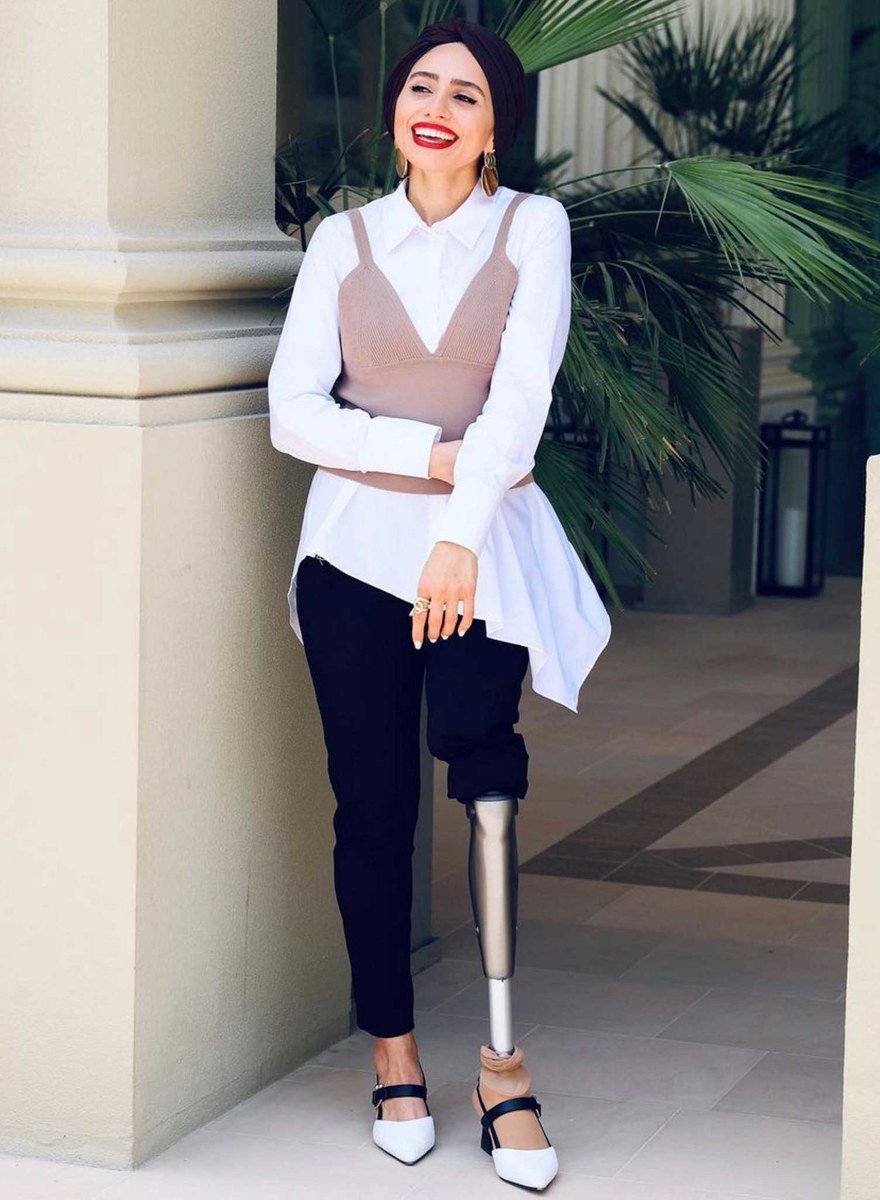DUBAI: When Iraqi sports enthusiast Zainab Al-Eqabi was seven years old, a bomb went off near her Baghdad home. Al-Eqabi, now 30, lost one of her legs as a result of the explosion.
“It hasn’t been an easy journey,” the pharmacist-turned-athlete told Arab News. It was the support of family and friends, as well as her own inner strength, that got her through. And despite the odds stacked against her, Al-Eqabi has taken her athleticism to a new level and has gone on to compete in several sports competitions in the UAE.
However, the 30-year-old admits that she has not always been an athlete — it was not until a doctor recommended that she should start swimming to ease her back pain, which was induced by her prosthetic leg, that she took up sports.
Al-Eqabi says that it “was a turning point” in her life.
“Swimming was not as difficult and scary as I thought at all, and it kind of opened up the doors to other sports,” she said. She competed in two triathlons as a cyclist in the UAE, and in 2020 joined the Dubai Fitness Challenge, during which she hauled a 2,000kg Jeep.
On top of an intense training schedule, a full-time job as a pharmacist and giving motivational speeches, Al-Eqabi makes a point of posting inspiring photographs of herself on Instagram — where she has accrued 1.5 million followers — with the aim of breaking stereotypes, combatting prejudices and contributing to a more confident society.
FASTFACTS
• Zainab Al-Eqabi lost her leg in a bomb blast in Baghdad when she was seven.
• She started swimming on her doctor’s advice to ease her back pain, which was induced by her prosthetic leg.
• On top of an intense training schedule, she works full-time as a pharmacist and gives motivational speeches.
• She competed in two triathlons as a cyclist in the UAE.
• In 2020, she joined the Dubai Fitness Challenge, during which she hauled a 2,000kg Jeep.
• Al-Eqabi has taken her athleticism to a new level and participated in several sports competitions in the UAE.
“In the Middle East, there’s this stigma on people with special needs or any kind of disability,” she said. “When I used to tell people that I have a prosthetic leg, they wouldn’t understand. They didn’t understand that I have an amputation. So, I decided to create a Facebook page called ‘Disabled and Proud’ and just started to note down stories from my daily life,” she said.
She recalled one instance when a woman confided in her that her disabled son had become more social and confident since he started following Al-Eqabi on social media.
“There are so many people with disabilities who feel shy or embarrassed, or they just choose not to integrate into society. They limit their activity and involvement, just because of what they’re going through,” she said. “I hated that. So that’s what made me start posting on social media.”
Naturally, Al-Eqabi was the perfect fit when The Body Shop was searching for regional faces to represent its new Global Self Love Movement campaign, which promotes self-esteem and body positivity.
“I can really relate to this campaign. Self-love is a treasure that we all need to keep developing so that we can have the best relationship with our own self. I’m honestly so proud to be a part of this campaign,” she said.
When it comes to her own beauty routine, she follows a diligent skin care regimen because she believes that taking care of our bodies is important. Most days, she goes bare-faced, simply applying moisturizer and sunscreen and using a face mask once a week. On the days that she is not swimming, she will swipe a few coats of mascara on her lashes.
Ultimately though, Al-Eqabi’s secret to feeling her best is getting plenty of sleep and exercise. “Working out just makes you really feel good,” she said.
Al-Eqabi has had to put many of her plans on hold due to the pandemic. However, she continues to be a beacon of body positivity.
“I want to tell the person with a disability, don’t let it stop you, because at the end of the day you need to live your life. It doesn’t make sense to be excluded and to go through that by yourself. This is your life. You deserve to live it and enjoy it.”






















